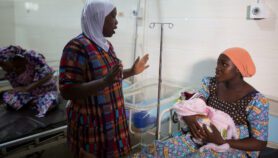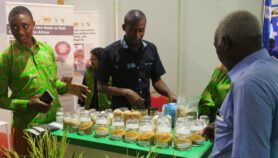By: Jeff Blander
Send to a friend
The details you provide on this page will not be used to send unsolicited email, and will not be sold to a 3rd party. See privacy policy.
Policymakers must think outside the box to strengthen clinical research networks for global health, says Harvard researcher Jeff Blander.
Globally, just ten per cent of medical research and discovery budgets target the 80 per cent of people who live on less than US$10 a day.
To help developing countries cope with the double burden of infectious and non-communicable diseases, health and clinical research resources in local settings must be leveraged to improve human health and maximise scientific discovery and innovation.
Many stakeholders already support clinical research networks that develop and test medicines, vaccines and other health interventions in the developing world. The European and Developing Countries Clinical Trials Partnership (EDCTP), for example, funds collaborations between African and European researchers to carry out clinical trials and develop vaccines or medicines.
But like the EDCTP, which specifically focuses on HIV/AIDS, tuberculosis and malaria, most existing networks do not support work on non-communicable diseases. Some investment is available, however.
The Fogarty International Center at the US National Institutes of Health, for example, has begun funding collaborative partnerships between the United States and developing countries to provide training and build research capacity in non-communicable diseases, such as cancer, cerebrovascular disease and lung disease.
Other research networks are trying to deal with the realities of working in the developing world, such as shortages of qualified health workers or limited distribution systems for reaching patients.
The Bill and Melinda Gates Foundation funds product-development partners, such as the Global AIDS Vaccine Initiative and the Program for Appropriate Technologies in Health, to expand their vaccine and medical-technology development programmes and promote local partnerships, reducing the gap between development and field implementation.
Yet despite these efforts, there are still significant gaps in clinical research networks in developing countries that limit their ability to design, develop and test products and services in the field to fight infectious and non-communicable diseases.
How to help?
Policymakers can, and must, help in several ways.
First, they can expand existing research networks and create new partnerships to integrate local disease priorities and research capabilities. They should focus on: epidemiologic research to assess the local or regional burden of infectious and non-communicable diseases; operations research to advance novel interventions for cardiovascular health to reduce the risk of ‘Western lifestyle’ conditions, such as high blood pressure and stroke; and market surveillance research to assess the use of generic and branded drugs in managing complex chronic diseases, such as diabetes and mental illness.
A second priority is to create incentives for translating research into best practices to improve the quality of patient care. Existing networks can play an important role in building local capacity to translate clinical research findings into scalable field-based interventions by supporting dissemination strategies between national universities, private and faith-based providers, and nongovernmental organisations.
These translation efforts should go one step further and consider the views of local clinicians earlier in the design and implementation of research plans.
Policymakers should also create incentives and investment opportunities to further encourage industry to participate in these networks. Global pharmaceutical companies such as Eli Lilly, Merck and Novartis have already sponsored initiatives to develop medicines and vaccines to treat tuberculosis, river blindness and malaria.
But public–private partnerships could also help support pilot studies to test the effectiveness of medicines and devices for non-communicable diseases and to collect or assess evidence of local product demand. Such partnerships could also help to develop local sustainable-pricing models to make life-saving medicines more accessible and affordable.
Lateral thinking
There should be support for research to examine the cost-effectiveness of the pipeline of emerging global health technologies. Clinical research networks should be strengthened to evaluate a full spectrum of medical technologies, including not just drugs and vaccines but also open-source informatics and communications tools, as well as nanoscale diagnostics to improve preventative care.
If health ministries are to make better-informed decisions about how to allocate scarce resources, they must assess the use of technological solutions for managing patients with infectious or non-communicable diseases.
New information and communication technologies (ICT) deserve special attention for their potential to improve operating efficiency. Investment in ICT does not simply reduce the costs of travelling between local centres and foreign research sites, but can also improve interactions and efficiency during the planning and implementation of research studies. ICT platforms can help to reduce administrative costs, connect research staff and investigators, expand enrolment in studies and reduce losses to follow-up studies.
Stakeholders must think outside the box to expand global health research networks and increase the coverage, both geographically and in terms of the diseases treated, for the more than two billion people living in developing countries.
Maximising research networks in the developing world to improve the discovery, development and access to life-saving therapies requires additional capital investment as well as new strategies aimed at expanding existing capabilities through new partnerships and shared learning.
Jeff Blander is co-leader of the Technology Innovation Working Group for the Harvard Initiative for Global Health (HIGH) at Harvard University, United States, and is an NIH-funded Fogarty International Center research fellow working in Tanzania.













